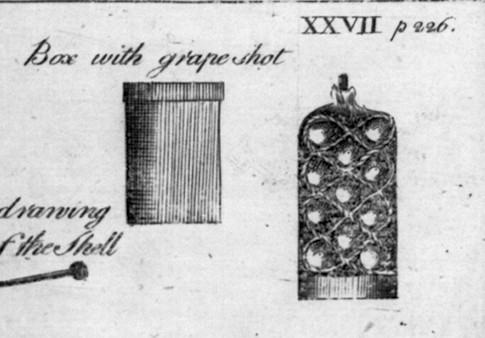|
Henry Morgan's Raid On Porto Bello
Henry Morgan's raid on Porto Bello was a military event which took place in the latter half of the Anglo-Spanish war beginning on 10 July 1668. Welsh buccaneer Henry Morgan led a largely English privateer force against the heavily fortified Spanish controlled town of Porto Bello (now Portobelo in modern Panama). After landing, Morgan and his men attempted to take the castles protecting the town. One such attempt involved using captured citizens as human shields to seize one of the castles. After capturing them all by force the privateers subsequently entered the city and then plundered it before Morgan demanded a large ransom from the Governor of Panama Don Agustín de Bracamonte. While the negotiations for this was going on, Bracamonte led a sizeable force from Panama City intent on recapturing the city and putting the privateers to the sword. Morgan however managed to ambush and repel Bracamonte's counter attack forcing him to deliver the ransom. Having achieved this, Morgan ... [...More Info...] [...Related Items...] OR: [Wikipedia] [Google] [Baidu] |
Anglo-Spanish War (1654–1660)
The Anglo-Spanish War was a conflict between the Commonwealth of England, English The Protectorate, Protectorate and Spain between 1654 and 1660. It was driven by the economic and religious rivalry between the two countries, with each side attacking the other's commercial and colonial interests in various ways, such as privateering and naval expeditions. In 1655, an English amphibious warfare, amphibious expedition invaded Spanish territory in the Caribbean, eventually capturing the island of Jamaica. In 1657, England formed an alliance with France, merging the Anglo-Spanish war with the larger Franco-Spanish War (1635–1659), Franco-Spanish War, with major land actions that took place in the Spanish Netherlands. Although the war was terminated after Stuart Restoration, The Restoration of King Charles II of England in 1660, tensions in the Caribbean with regards to the English possession of British Jamaica, Jamaica kept the conflict going intermittently for over ten years. ... [...More Info...] [...Related Items...] OR: [Wikipedia] [Google] [Baidu] |
Henry Morgan's Raid On Puerto Del Príncipe
The Raid on Puerto del Príncipe was a military event which took place during the latter stage of the Anglo-Spanish War between March and April 1668 on the Spanish island of Cuba. Some 700 Buccaneers in twelve ships led by Captain Henry Morgan landed in the Gulf of Santa María and marched to capture the inland town of Puerto del Príncipe. As they approached the town they defeated the Spanish militia gathered by the ctiy's Governor in the Battle of la Savana. They then captured the town before plundering and sacking the place, while also gathering a small ransom for the town's prisoners. Background England and Spain had remained in a state of war in the Caribbean following the Restoration of Charles II in 1660. England having taken possession of Jamaica since 1657 had yet to be confirmed by Spain in a treaty. As a result, Buccaneers were invited, to base themselves at Port Royal, to help defend against Spanish attacks. In 1667 diplomatic relations between the kingdoms of Engla ... [...More Info...] [...Related Items...] OR: [Wikipedia] [Google] [Baidu] |
Grapeshot
In artillery, a grapeshot is a type of ammunition that consists of a collection of smaller-caliber round shots packed tightly in a canvas bag and separated from the gunpowder charge by a metal wadding, rather than being a single solid projectile. When assembled, the shot resembled a cluster of grapes, hence the name. Grapeshot was used both on land and at sea. On firing, the canvas wrapping disintegrates and the contained balls scatter out from the muzzle, giving a ballistic effect similar to a giant shotgun. Grapeshot was devastatingly effective against massed infantry at short range and was also used at medium range. Solid shot was used at longer range and canister at shorter. When used in naval warfare, grapeshot served a dual purpose. First, it continued its role as an anti-personnel projectile. However, the effect was diminished due to a large portion of the crew being below decks and the addition of hammock netting in iron brackets intended to slow or stop smaller shot. ... [...More Info...] [...Related Items...] OR: [Wikipedia] [Google] [Baidu] |
Round Shot
A round shot (also called solid shot or simply ball) is a solid spherical projectile without explosive charge, launched from a gun. Its diameter is slightly less than the bore of the barrel from which it is shot. A round shot fired from a large-caliber gun is also called a cannonball. The cast iron cannonball was introduced by French artillery engineers after 1450; it had the capacity to reduce traditional English castle wall fortifications to rubble. French armories would cast a tubular cannon body in a single piece, and cannonballs took the shape of a sphere initially made from stone material. Advances in gunpowder manufacturing soon led the replacement of stone cannonballs with cast iron ones. Round shot was made in early times from dressed stone, referred to as gunstone (Middle English: ''gunneston''), but by the 17th century, from iron. It was used as the most accurate projectile that could be fired by a smoothbore cannon, used to batter the wooden hulls of oppos ... [...More Info...] [...Related Items...] OR: [Wikipedia] [Google] [Baidu] |
Pearl Hunting
Pearl hunting, also known as pearl fishing or pearling, is the activity of recovering or attempting to recover pearls from wild molluscs, usually oysters or mussels, in the sea or freshwater. Pearl hunting was prevalent in India and Japan for thousands of years. On the northern and north-western coast of Western Australia pearl diving began in the 1850s, and started in the Torres Strait Islands in the 1860s, where the term also covers diving for nacre or mother of pearl found in what were known as pearl shells. In most cases the pearl-bearing molluscs live at depths where they are not manually accessible from the surface, and diving or the use of some form of tool is needed to reach them. Historically the molluscs were retrieved by freediving, a technique where the diver descends to the bottom, collects what they can, and surfaces on a single breath. The diving mask improved the ability of the diver to see while underwater. When the surface-supplied diving helmet became availabl ... [...More Info...] [...Related Items...] OR: [Wikipedia] [Google] [Baidu] |
Bay Of Bocas Del Torro
A bay is a recessed, coastal body of water that directly connects to a larger main body of water, such as an ocean, a lake, or another bay. A large bay is usually called a Gulf (geography), ''gulf'', ''sea'', sound (geography), ''sound'', or bight (geography), ''bight''. A ''cove'' is a small, circular bay with a narrow entrance. A ''fjord'' is an elongated bay formed by glacial action. The term ''embayment'' is also used for , such as extinct bays or freshwater environments. A bay can be the estuary of a river, such as the Chesapeake Bay, an estuary of the Susquehanna River. Bays may also be nested within each other; for example, James Bay is an arm of Hudson Bay in Atlantic Canada, northeastern Canada. Some large bays, such as the Bay of Bengal and Hudson Bay, have varied marine geology. The land surrounding a bay often reduces the strength of winds and blocks waves. Bays may have as wide a variety of shoreline characteristics as other shorelines. In some cases, bays have Bea ... [...More Info...] [...Related Items...] OR: [Wikipedia] [Google] [Baidu] |



